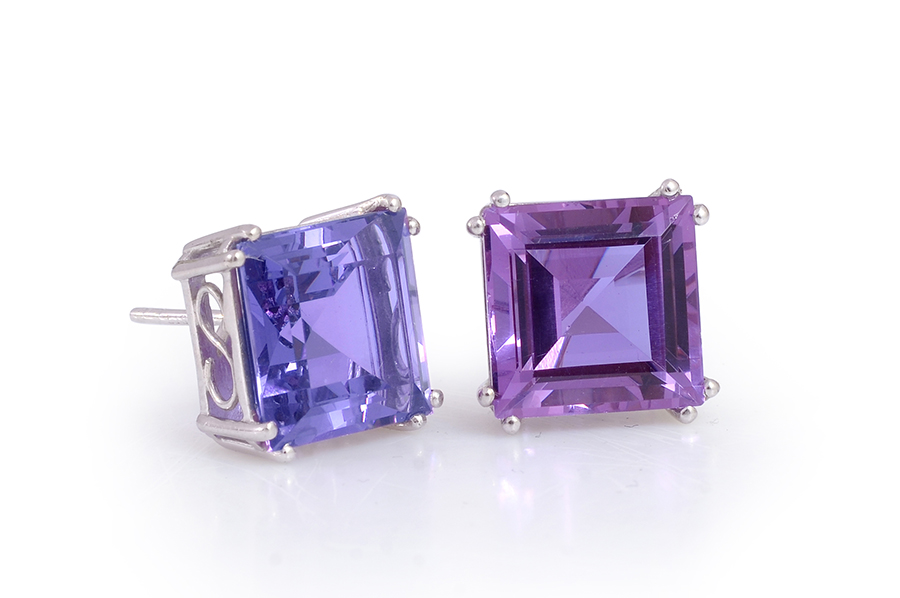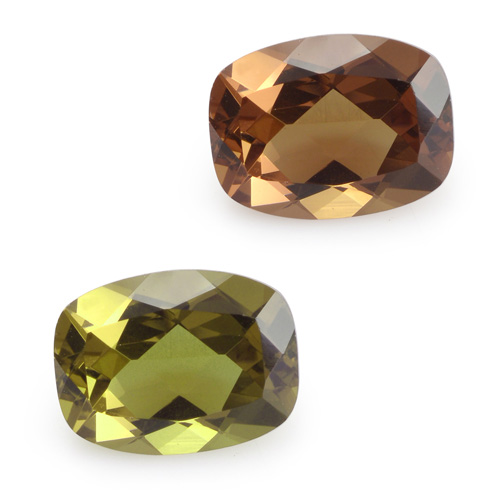Alexite
Alexite gemstones exhibit a splendid color-change effect, shifting from shades of blue, purple, green and orange under various light sources.
Alexite is a synthetic gemstone containing rare earth minerals, modeled after alexandrite, a color-change variety of chrysoberyl. This natural color-change effect makes Alexandrite particularly rare and expensive, with values comparable to emeralds, rubies or sapphires. While Alexandrite may present itself in bright green, red and orange-yellow shades, Alexite has two varieties. Autumn alexite ranges from green to dusty orange, like the turning of the foliage in fall. Lavender alexite ranges from beautiful tanzanite blue to deep lavender under artificial light. When viewed outdoors, it appears nearly pink. The color spreads throughout and maintains consistent brilliance. Its hardness and durability guards against chipping typically found with other stones. Although synthetic alexandrite is widely used for jewelry, it is predominantly used in high-powered alexandrite laser systems developed for military and government applications.
- Alexite is a synthetic version of alexandrite, a stone named for Czar Alexander of Russia because it was said to have been discovered on the ruler’s 18th birthday in 1830.
- A popular stone in Russia, the colors of alexandrite mirror the red and green colors of the Imperial Russian military and is thought to bring good luck.
- A result of its two colors, Russian tradition encourages alexandrite lovers to wear multiple pieces at once. A single piece of alexandrite is thought to invite loneliness.
- Crystal healers use alexandrite to strengthen intuition in critical situations and believe it aids creativity and inspires imagination."
LOCATION: India
Alexite, or synthetic alexandrite, has been on the market since the 1800s. Initial offerings were creating by synthesizing corundum laced with vanadium to achieve the color-change effect. However, this version was easily identified by gemologists as a copy. By 1975, the current synthetic alexandrite method using a flux-melt, pulled crystal process became the preferred method. Flux grown synthetic alexandrite is a slower process and more closely resembles natural alexandrite in physical and chemical composition. Alexite is not only more affordable than natural alexandrite, but it is available in a variety of calibrated sizes and shapes unattainable in natural stones.
Alexite is a registered trademark for this synthetic color-change glass gemstone manufactured in India. Few companies in the United States have earned the rights to sell alexite, and we are one of them.

- Ranks 8.5 on the Mohs hardness scale.
- Colors display in blue and purple or green and maple with a captivating color-change effect.
- Sourced from synthetic gemstone producers in India.
- Member of the chrysoberyl family and includes beryllium aluminum oxide.
- Alternative gift for 45th and 55th anniversaries. Alexandrite is the traditional gift.





